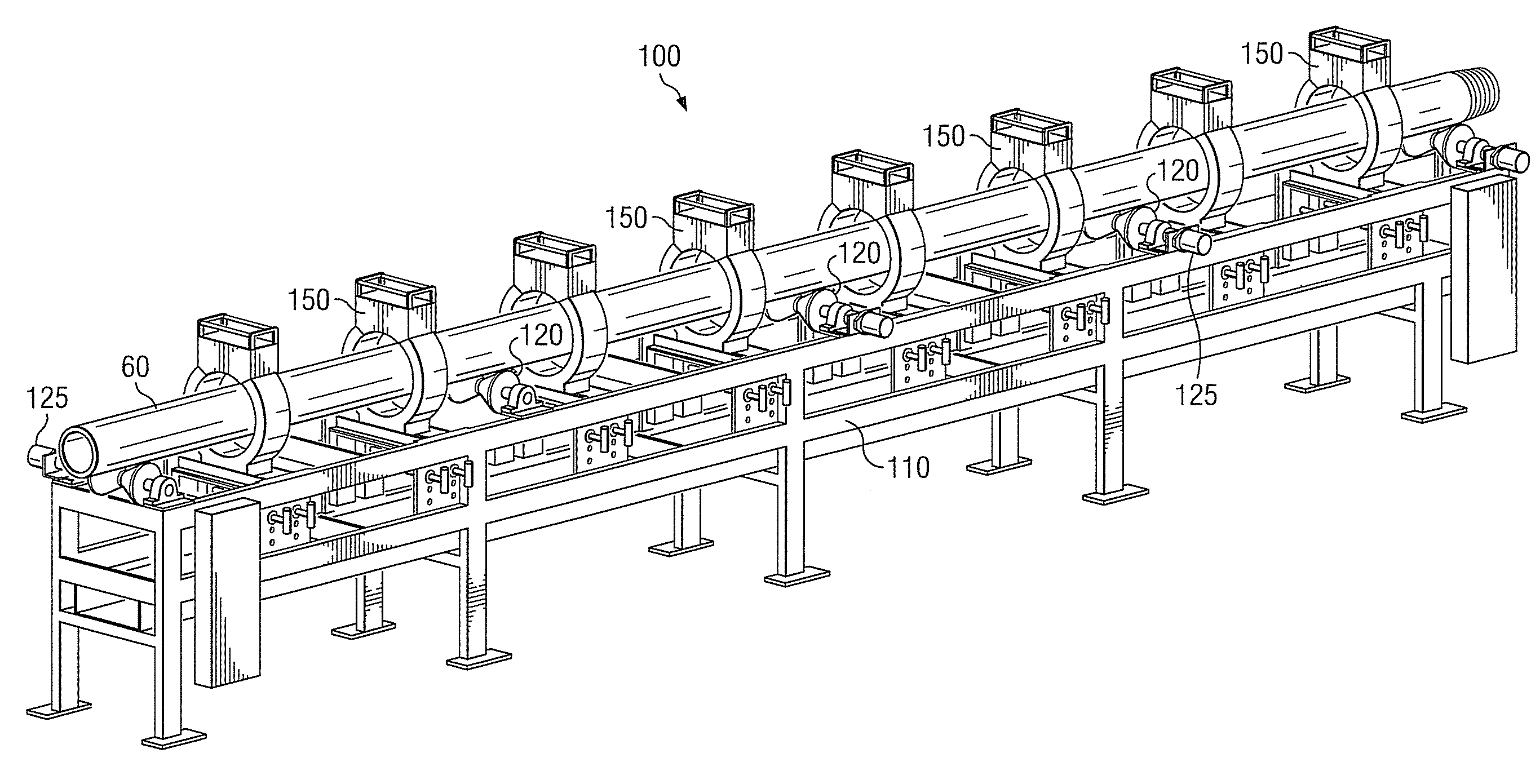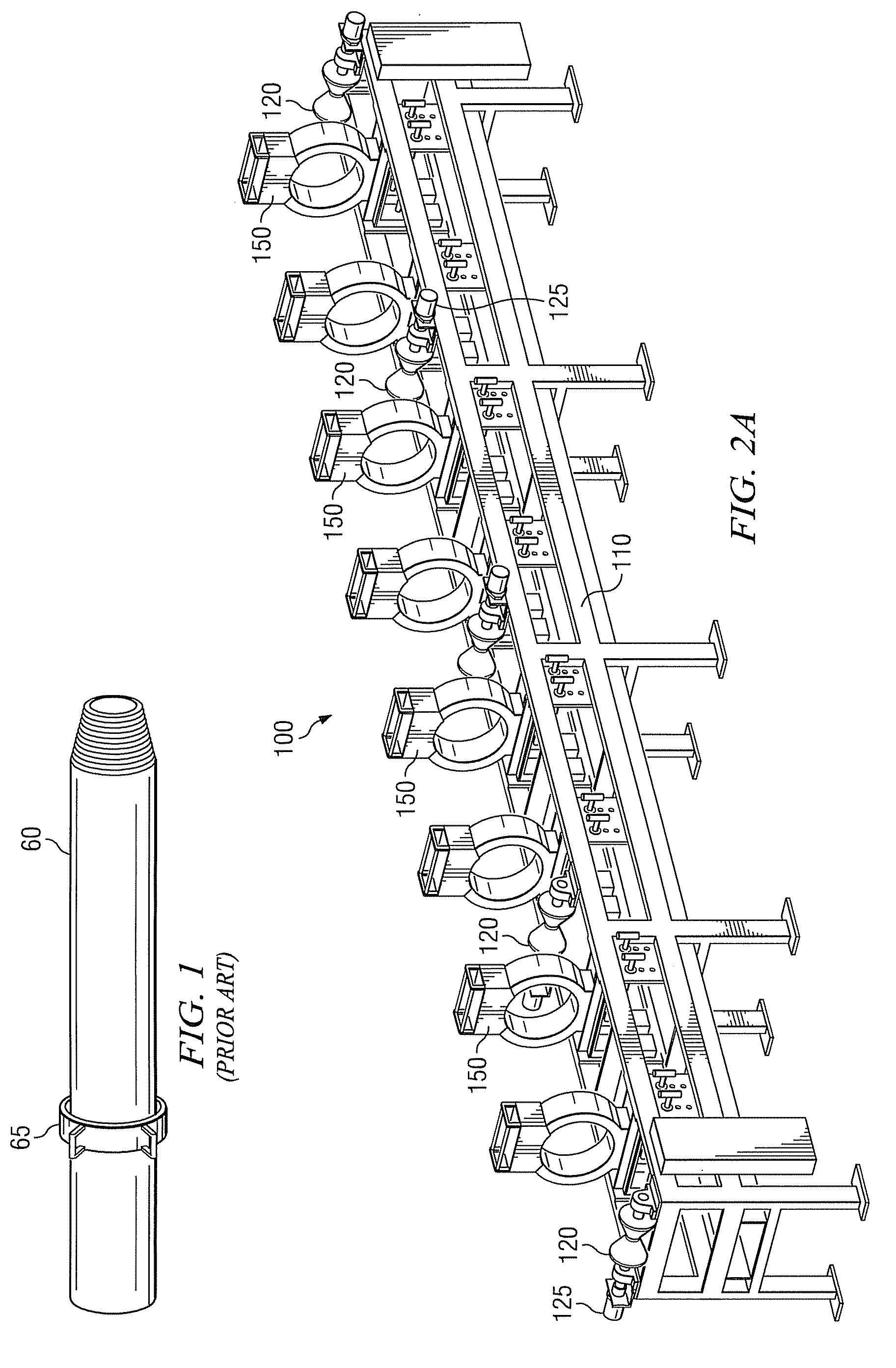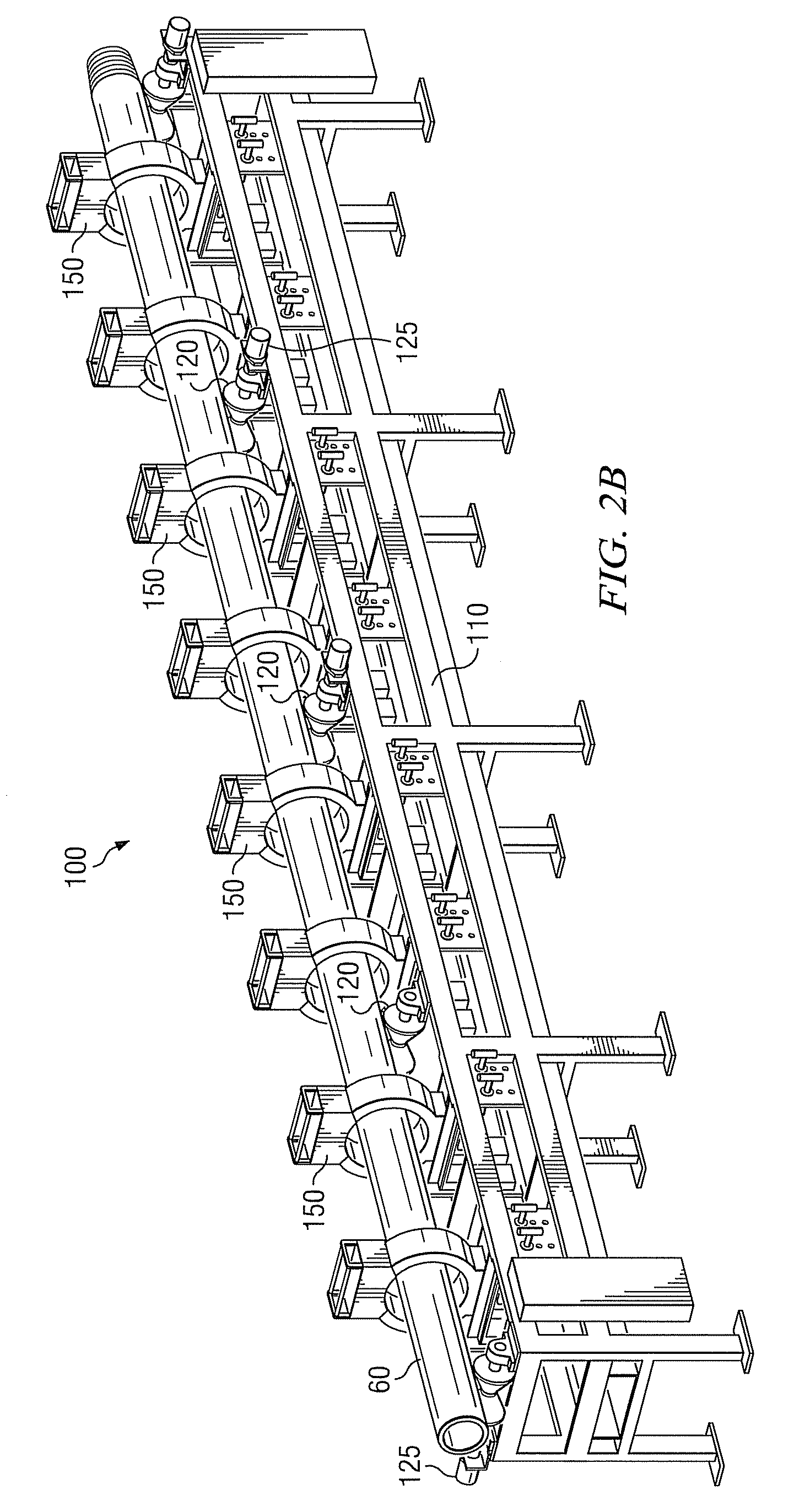Method for Magnetizing Casing String Tubulars
a tubular and casing technology, applied in the field of subterranean borehole drilling and surveying, can solve the problems of significant differences in the imparted magnetization from tubular to tubular, time and labor intensive, and potentially dangerous, and achieve accurate well placement, rapid magnetization, and accurate distance determination
- Summary
- Abstract
- Description
- Claims
- Application Information
AI Technical Summary
Benefits of technology
Problems solved by technology
Method used
Image
Examples
Embodiment Construction
[0026]With reference to FIGS. 2A through 6, it will be understood that features or aspects of the exemplary embodiments illustrated may be shown from various views. Where such features or aspects are common to particular views, they are labeled using the same reference numeral. Thus, a feature or aspect labeled with a particular reference numeral on one view in FIGS. 2A through 6 may be described herein with respect to that reference numeral shown on other views.
[0027]Referring now to FIGS. 2A and 2B, one exemplary embodiment of an apparatus 100 in accordance with the present invention is shown in perspective view. In FIG. 2B, apparatus 100 is shown with an exemplary tubular 60 deployed therein. Otherwise, FIGS. 2A and 2B are identical. In the exemplary embodiment shown, apparatus 100 includes a plurality of rollers 120 deployed on a nonmagnetic (e.g., aluminum) frame 110. The plurality of rollers may be thought of as a track along which tubulars 60 may be moved in a direction subst...
PUM
| Property | Measurement | Unit |
|---|---|---|
| time | aaaaa | aaaaa |
| weight | aaaaa | aaaaa |
| length | aaaaa | aaaaa |
Abstract
Description
Claims
Application Information
 Login to View More
Login to View More - R&D
- Intellectual Property
- Life Sciences
- Materials
- Tech Scout
- Unparalleled Data Quality
- Higher Quality Content
- 60% Fewer Hallucinations
Browse by: Latest US Patents, China's latest patents, Technical Efficacy Thesaurus, Application Domain, Technology Topic, Popular Technical Reports.
© 2025 PatSnap. All rights reserved.Legal|Privacy policy|Modern Slavery Act Transparency Statement|Sitemap|About US| Contact US: help@patsnap.com



